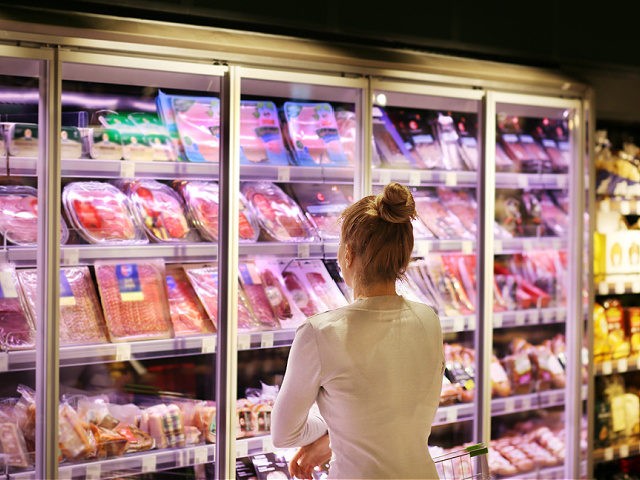A majority of Americans report seeing their grocery bills increase and expect food prices to keep rising, a new Rasmussen Reports poll found.
As Democrats continue to exacerbate inflation by spending billions and trillions in taxpayer funds on other countries and “climate change,” 89 percent of American adults say they are paying more for groceries now than a year ago (87 percent). Sixty-one percent say they expect the amount they spend on groceries to be even higher a year from now.
Out of 1,000 U.S. American adults surveyed between July 24-25, 63 percent say they have changed their eating habits because of increasing food costs. That percentage is up from 55 percent in April, and 31 percent report not having to change how they eat because of inflation. The margin of sampling error is ±3 percentage points at the 95 percent level of confidence.
More married Americans and those with children say they expect to spend more on groceries next year compared to Americans who are unmarried and without children. Additionally, Americans who make an annual income below $30,000 (75 percent) say increasing food costs have cause them to change their eating habits, compared to 31 percent of people with incomes above $200,000 yearly.
Broken down by political affiliation, 77 percent of Republicans, nearly half (47 percent) of Democrats, and 60 percent of unaffiliated voters expect their grocery bills to be higher a year from now. However, Democrats are “less likely to say rising food prices have caused them to change their eating habits,” the poll report stated.
The survey results are similar to a June YouGov/CBS News poll, which found that 61 percent of Americans say the price of food is affecting them “a lot,” followed by 29 percent who say it is affecting them “some.”
The Rasmussen Reports survey results come after the Department of Labor reported an annual rate of inflation of 9.1. percent in June — the highest rate since 1981 and a new 40-year high. The results also come as nearly half of the food banks in the United States report experiencing an increased demand.

COMMENTS
Please let us know if you're having issues with commenting.